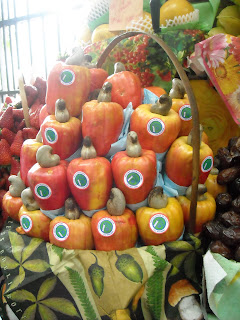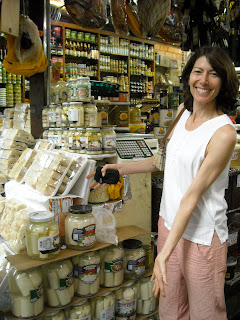And those mountains are really high! We passed the13,000 foot mark, and I had the altitude headache to prove it. Traditional remedies like coca tea did help.
In these high mountain plains is a National Reserve for Vicunas, Alpacas & Llamas. It was amazing seeing bands of them roaming around. Here I am feeding an alpaca. Later in the trip, I would discover that alpacas are not only cute, they're also delicious! (Alpaca is a local delicacy). With a slight twinge of guilt, I highly recommend alpaca with cream of quinoa.
My favorite picture of llamas & alpacas...
The local people build stone corrals to keep their herds of llamas. From a distance they look otherwordly!
We were also lucky enough to see vicunas, which are wild (vs domesticated). I hadn't realized that vicuna fur is much more expensive than llama or alpaca, and it's because they have to be caught in the wild & sheared. According to our tour guide, the Peruvian government allows vicunas to be caught once a year, and it's the occasion for a big fiesta. The local people meet in the high Andean plains. They join hands & start walking in a line, loudly singing & shouting. Apparently, the vicunas are distressed by the loud noise, and they respond by freezing in place and becoming docile. The line of villagers surrounds them, still singing, and walks them back to a temporary corral, where they are kept until they're sheared and then released. With all that work, no wonder their fur is so expensive!
Vicunas:







































